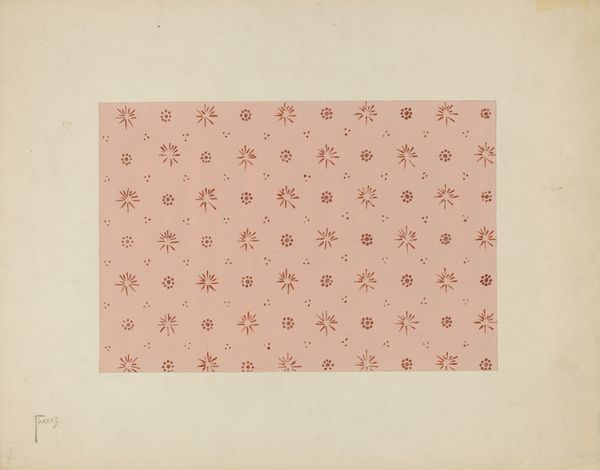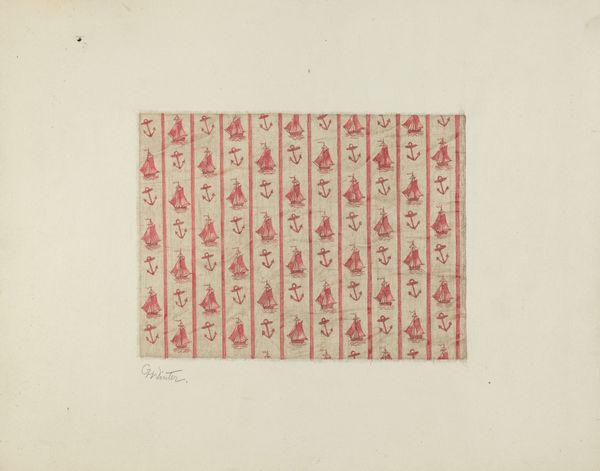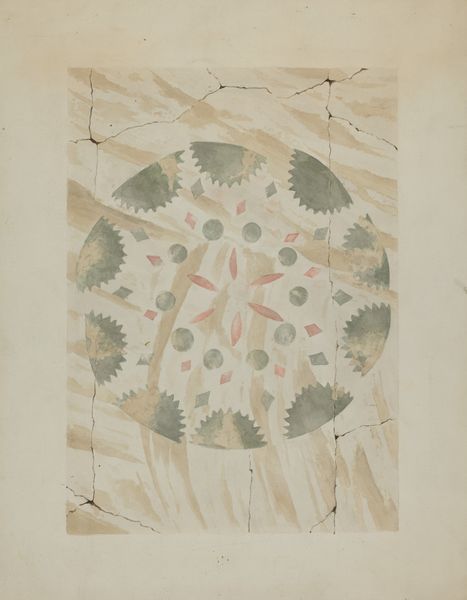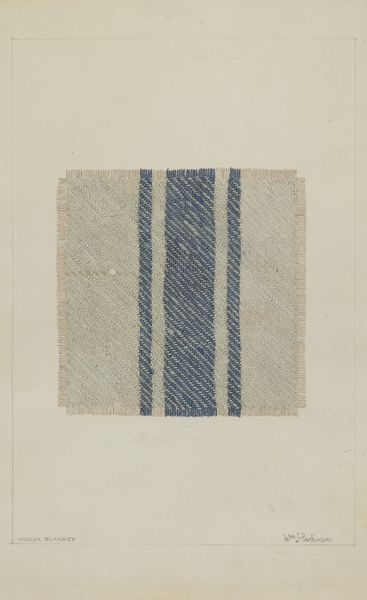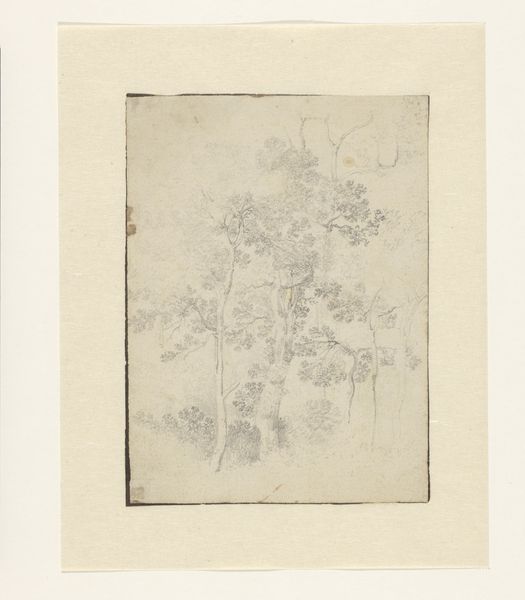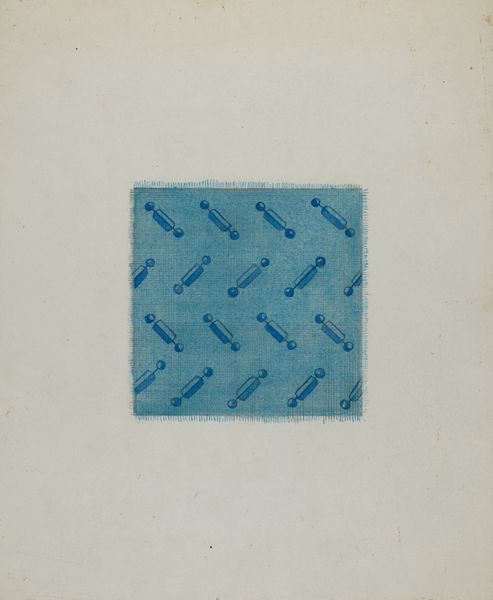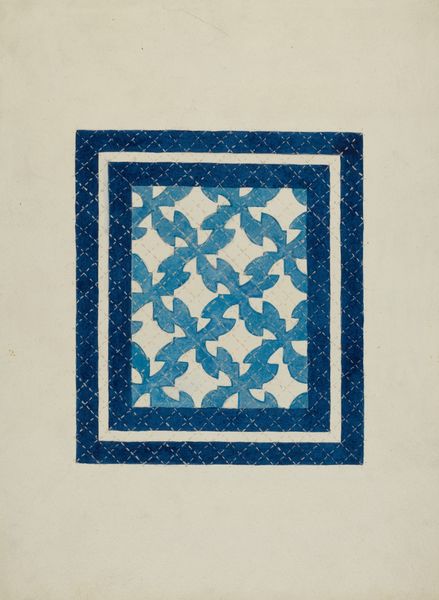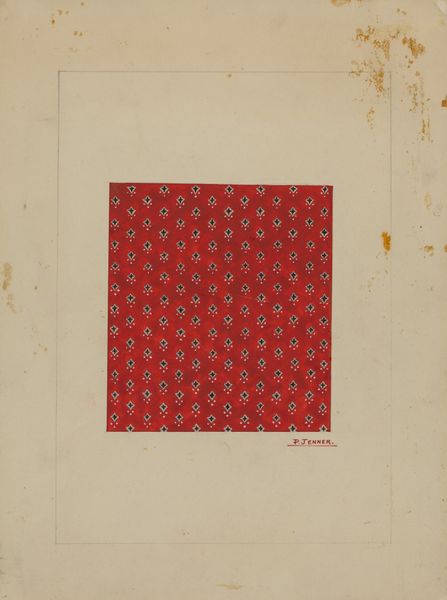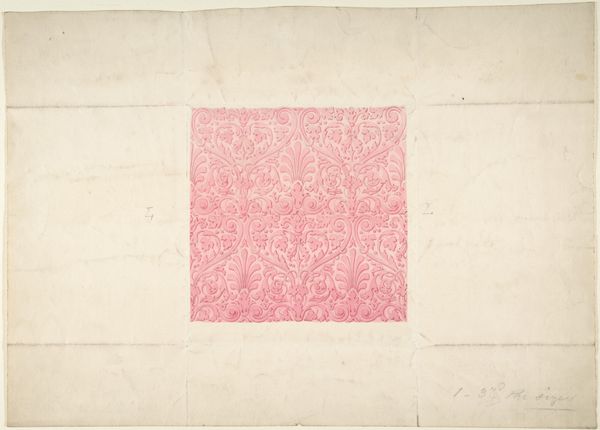
drawing, paper, watercolor
#
drawing
#
water colours
#
paper
#
watercolor
#
watercolour illustration
#
decorative-art
#
watercolor
Dimensions: overall: 22.9 x 30.7 cm (9 x 12 1/16 in.) Original IAD Object: 6 1/8" repeat
Copyright: National Gallery of Art: CC0 1.0
Curator: Here we have Nicholas Acampora's "Wall Paper," created in 1936, a watercolor and pencil drawing on paper. What do you make of it? Editor: Immediately, I notice the serenity of the pale blue and the delicate repetition. The botanical forms remind me of pressed flowers or perhaps even ferns preserved under glass. There's something inherently gentle about the overall design. Curator: It's a deceptively simple work. We need to consider the social and aesthetic context of the 1930s. Wallpaper, in that era, played a significant role in shaping domestic environments and conveying aspirations. Design had become democratized, and pattern-making, which had been elevated through the arts and crafts movement, became a potent language to express social identity through home design. Editor: From a formal perspective, the evenly spaced distribution of the golden foliage against the watery blue field generates a subtle, rhythmic pattern. The considered negative space amplifies the design, allowing the viewer's eye to calmly navigate the visual plane and thus engage deeply with color, texture and structure. Curator: Consider the aspiration embedded in decorative art. Even simple repeating forms evoke nature, inviting tranquility and even a suggestion of bucolic ideals into the urban, Depression-era home. In this era mass production was reshaping cultural habits so wallpaper samples also allowed the patron to dream beyond constraints of austerity, offering the prospect of attainable beauty. Editor: You are so right. Acampora allows just enough irregularity within each botanical depiction to disrupt any sense of cold perfection; and this lends the watercolor both immediacy and a welcoming disposition, something very delicate is happening between order and irregularity in pattern-making. Curator: What this work encapsulates is an interesting moment when consumer culture and the intimacy of domestic space collided. This piece acts as a microcosm for larger aspirations during this challenging socio-political moment. Editor: It’s fascinating how much emotional weight can be held within something seemingly so modest, like a design for wallpaper. Curator: Absolutely. Art's value lies not only in its aesthetic appeal but also its cultural resonance and historic weight. Editor: And here we can really see how form and content merge.
Comments
No comments
Be the first to comment and join the conversation on the ultimate creative platform.
